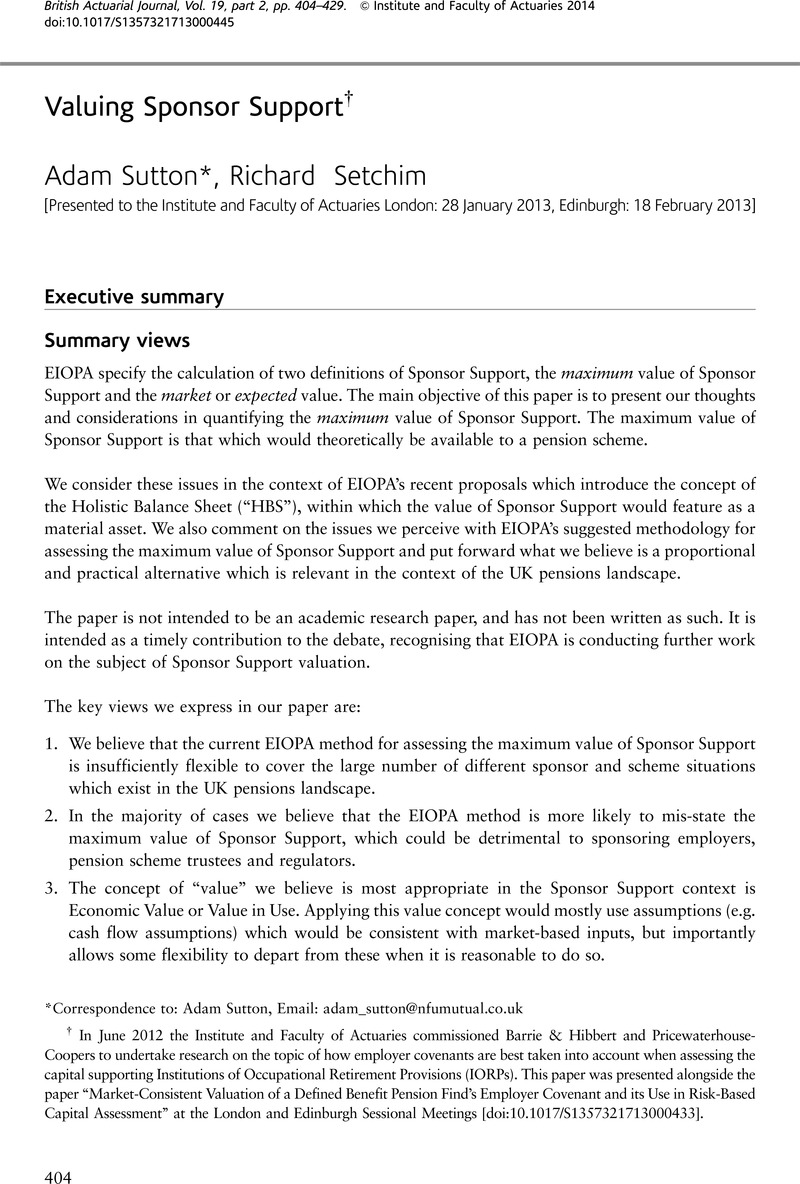Article contents
Valuing Sponsor Support†
Published online by Cambridge University Press: 09 July 2014
Abstract

- Type
- Sessional meetings: papers and abstracts of discussions
- Information
- Copyright
- Copyright © Institute and Faculty of Actuaries 2014
Footnotes
In June 2012 the Institute and Faculty of Actuaries commissioned Barrie & Hibbert and PricewaterhouseCoopers to undertake research on the topic of how employer covenants are best taken into account when assessing the capital supporting Institutions of Occupational Retirement Provisions (IORPs). This paper was presented alongside the paper “Market-Consistent Valuation of a Defined Benefit Pension Find's Employer Covenant and its Use in Risk-Based Capital Assessment” at the London and Edinburgh Sessional Meetings [doi:10.1017/S1357321713000433].
References
1 It is unclear from the EIOPA consultation whether one should add back the pension scheme deficit as disclosed on the sponsor's balance sheet or the entirety of the liability. The more reasonable interpretation must be to add back the balance sheet deficit, however this is not fully specified in the Consultation.
2 Known as Simplification 1 and Simplification 2 respectively.
3 Un-geared or unleveraged tax simply means the tax the business would need to pay ignoring interest payments (which are usually tax deductible).
4 For example, British Airways Plc (now part of International Airlines Group) has two defined benefit pension schemes – the Airways Pension Scheme and the New Airways Pension Scheme which both have the same sponsoring employer.
5 Unlevered simply means the cash flows without taking into account the effect of interest or debt repayments.
6 We note that the business value calculated this way may implicitly assume that the business continues to trade into perpetuity, in contrast to the scheme which (if closed to new members) has a finite life over which member benefits will need to be paid. As most schemes will have over 50 years to go before all liabilities are satisfied, and the proportion of value which exists after 50 years is very small, we believe this approximation is appropriate. However we recommend significant headroom in our stage 1 assessment to allow for this inaccuracy.
- 3
- Cited by




